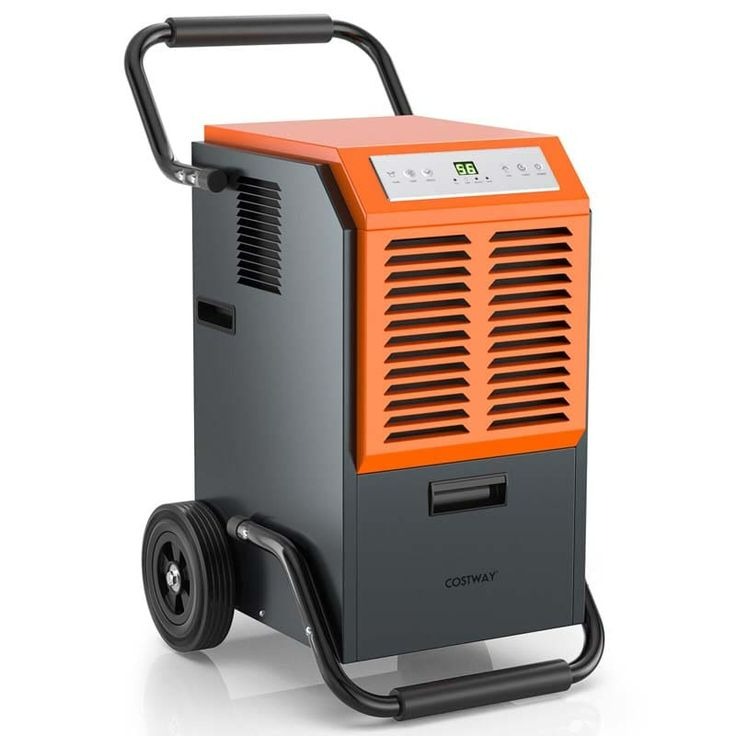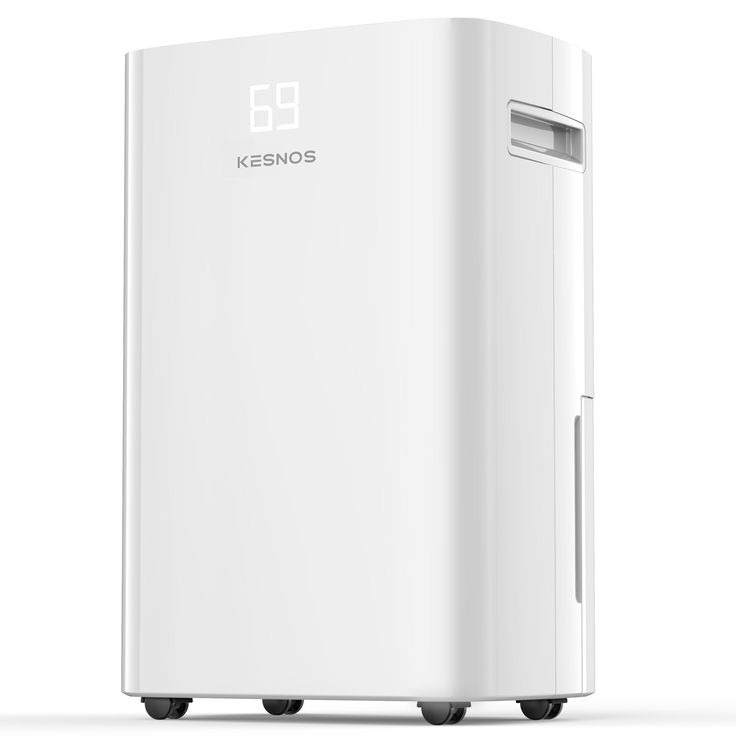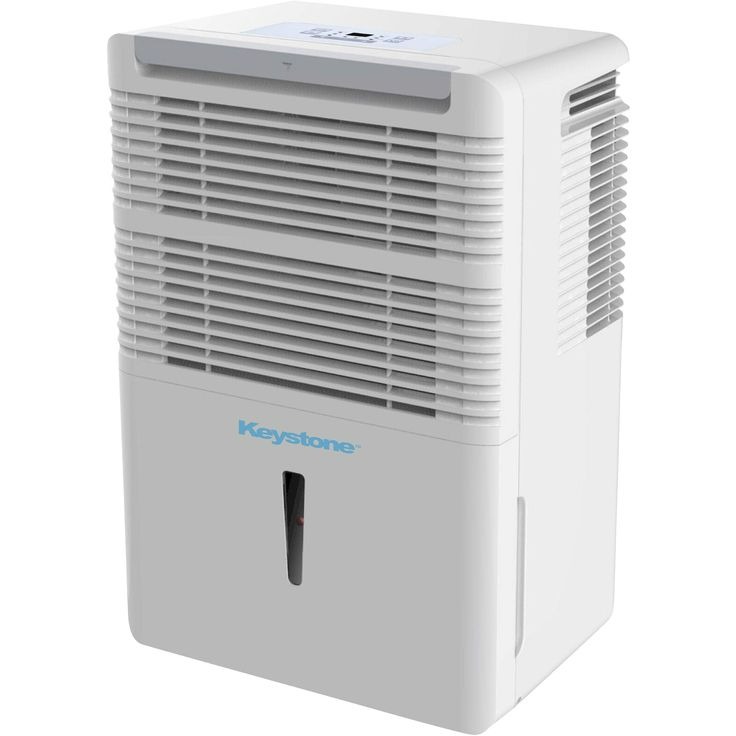The Relationship Between Humidity and Mold Growth
Mold thrives in moist environments. High humidity levels offer the perfect breeding ground for mold spores. When indoor humidity soars above 60 percent, mold risks increase. Dehumidifiers play a crucial role here. They reduce moisture in the air, making interiors less hospitable for mold. To prevent mold effectively, it’s vital to maintain indoor humidity between 30-50 percent. A dehumidifier for mold works by pulling in damp air, removing the moisture, and releasing dry air back. By doing this, it deprives mold of the conditions it needs to grow. Consistent use of a dehumidifier for mold can help maintain optimal humidity and prevent mold growth. Remember, controlling humidity is key to mold prevention.

Types of Dehumidifiers Suitable for Mold Prevention
When choosing a dehumidifier for mold, several types stand out. Each serves a specific need and space size.
Refrigerant (Compressor) Dehumidifiers
Refrigerant dehumidifiers use a compressor. They work by cooling metal coils inside. As air passes over, moisture condenses and collects in a tank. They are great for warm, humid climates. These units are common in homes and large spaces.
Desiccant Dehumidifiers
Desiccant dehumidifiers use absorbent materials to remove moisture. Air flows over a desiccant substance, which soaks up water. This type is ideal for cooler, less humid areas. They often come in compact sizes, fitting small rooms well.
Thermo-Electric Dehumidifiers
Thermo-electric dehumidifiers rely on the Peltier effect. They are quieter and energy-efficient. Perfect for bedrooms or small, moderately damp spaces. However, they may not suit very wet conditions.
Each type offers a unique approach to reducing indoor moisture. Match the dehumidifier to your specific mold prevention needs. Check for coverage area and tank capacity when selecting. Aim for a balance between functionality and energy use. Discuss options with a retailer or an HVAC specialist if unsure. They can help you decide based on your home’s humidity level.
How Dehumidifiers Can Stop Mold in Its Tracks
Stopping mold starts with controlling the environment it grows in. Dehumidifiers play a vital role by maintaining low humidity levels within your home. Here’s how they can put a stop to mold proliferation:
Remove Excess Moisture
The primary function of a dehumidifier for mold is to extract surplus water from the air. This directly attacks one of mold’s lifelines, excess moisture, reducing its ability to thrive.
Maintain Optimal Humidity
A good dehumidifier for mold keeps indoor humidity levels between 30 and 50 percent. This range makes it hard for mold to grow. It’s similar to removing water from a weed – without it, the weed cannot survive.
Circulate Dry Air
By circulating drier air throughout the space, dehumidifiers for mold make it less inviting for mold spores. Ensuring continuous airflow helps prevent damp spots where mold likes to settle.
Filter the Air
Many dehumidifiers come with air filters. These can trap mold spores and other allergens, further purifying the air you breathe.
Using a dehumidifier for mold effectively creates an environment that is inhospitable for mold. Pair regularly use with other mold prevention techniques for the best results. Always follow the manufacturer’s guidelines and consider the space size when using a dehumidifier to ensure you’re achieving the desired effect.

The Best Places to Use a Dehumidifier to Prevent Mold
Choosing the right spots for a dehumidifier can make all the difference in mold prevention. Ideal locations for a dehumidifier for mold are areas that are prone to dampness and low airflow. Here are the top places where you should consider placing a dehumidifier:
- Bathrooms: These are often the dampest rooms in a home. A dehumidifier can help keep surfaces dry and mold-free.
- Basements: Basements can trap moisture, especially if they are below ground level. Keep a dehumidifier running to protect against mold growth.
- Kitchens: With cooking and washing activities, humidity levels can rise quickly. Use a dehumidifier to maintain a dry environment.
- Laundry Rooms: Wet clothes can contribute to high humidity. Position a dehumidifier in this area to manage moisture levels.
- Storage Spaces: Garages, attics, and closets may have minimal ventilation. A dehumidifier can prevent mold in these hidden spots.
Avoid placing dehumidifiers in corners where air flow is obstructed. Regularly check and clean your device to ensure it operates effectively. Monitor the humidity levels with a hygrometer to ensure they stay within the mold-preventing range of 30 to 50 percent. In addition to these specific areas, consider using dehumidifiers in any space where you notice condensation on walls or windows, or any musty odors—both signs of excess moisture and potential mold issues.
Setting Up Your Dehumidifier for Optimal Mold Control
To show mold the door, setting up your dehumidifier correctly is crucial. Here’s how to maximize its mold-fighting powers:
Choose the Right Location
Consider high humidity areas first. A basement or bathroom is often ideal. Ensure the dehumidifier for mold is not cornered. It needs air flowing freely to work well.
Set the Correct Humidity Level
Adjust the dehumidifier to maintain 30-50 percent humidity. This level is hostile to mold. Most dehumidifiers have a built-in hygrometer for this purpose.
Ensure Proper Airflow
Check for blocked vents or filters. They should be clear to pull in damp air and push out dry air efficiently. Regular airflow is key to keep mold at bay.
Regularly Empty the Water Tank
Water collects in the tank. Don’t let it sit. It could breed mold. Empty the tank often, ideally once it fills.
A well-set-up dehumidifier is a mold’s enemy. Place it smartly, adjust for ideal humidity, and keep it clean. Follow these steps, and you can expect to breathe easier at home, free from the worry of mold creeping in.

Maintaining Your Dehumidifier for Longevity and Efficiency
To keep a dehumidifier for mold in top shape, regular maintenance is essential. A well-maintained device will work more effectively and last longer. Here’s how to care for your dehumidifier:
Keep It Clean
Clean the unit frequently to ensure smooth operation. Wipe the exterior with a damp cloth. Remove and wash the air filter, if applicable, according to the manual’s instructions.
Inspect Coils and Grills
Dust can accumulate on the coils and grills, reducing efficiency. Inspect these parts regularly and clean them as needed.
Check the Tank
Empty the water tank regularly to prevent mold growth inside the dehumidifier itself. Look for any signs of wear or damage.
Secure the Settings
Review the humidity level settings often. Adjust them to keep indoor humidity at the optimal mold-preventing range.
Listen for Odd Sounds
Be alert for any unusual noises from the dehumidifier. Strange sounds can signal a problem. Consult the manual or reach out to customer service if you’re uncertain.
By following these care tips, your dehumidifier for mold will remain an effective tool in your home. Regular maintenance helps prevent issues and ensures your indoor air stays dry, discouraging mold growth.
Additional Tips for Mold Prevention at Home
Beyond using a dehumidifier for mold, there are other effective strategies to prevent mold at home. Implementing these additional tips can help create an even less hospitable environment for mold to grow.
- Improve Ventilation: Keep air moving. Open windows when weather permits, and use exhaust fans in bathrooms and kitchens.
- Fix Leaks Promptly: Water leaks contribute to dampness. Address leaks in roofs, windows, or pipes as soon as you spot them.
- Dry Wet Areas: Wipe up spills immediately. After showers, squeegee water off of walls and floors.
- Use Mold-Resistant Products: Opt for mold-resistant paints, building materials, and fabrics, especially in high moisture areas.
- Control Clutter: Items piled together can restrict airflow and create damp spots. Keep your space tidy to promote air circulation.
- Monitor Indoor Plants: Plants can harbor mold in their soil. Ensure they have proper drainage and don’t overwater them.
Keeping mold at bay requires a combination of methods. Dehumidifiers are stellar at reducing moisture, but they are part of a broader strategy. By improving home care practices, you can enhance your fight against mold and ensure a healthier living space. Remember, the key is to keep your home as dry and airy as possible.
When to Call a Professional for Mold Issues
Sometimes, despite all your efforts with a dehumidifier for mold, professional help may be needed. It’s crucial to recognize when the situation is beyond your control. Here are signs that it’s time to call in the experts:
- Severe Mold Infestation: If you see large areas of mold, it’s best to contact a professional. They can safely remove it.
- Health Reactions: If allergy-like symptoms appear or worsen, mold might be the cause. Professionals can assess and address the problem.
- Persistent Odors: A musty smell that doesn’t go away might mean hidden mold. A professional can find and remove it.
- After Water Damage: If your home has suffered flooding or severe leaks, a professional can prevent mold before it starts.
Do not attempt to handle large mold infestations yourself. Disturbing mold can release spores into the air, increasing exposure risks. A professional has the right tools and protective equipment to handle the removal safely and effectively. They can also give you advice on preventing future mold problems. It’s better to be safe and let the experts take care of serious mold issues. Keep your home healthy and mold-free with the right balance of DIY care and professional assistance when necessary.